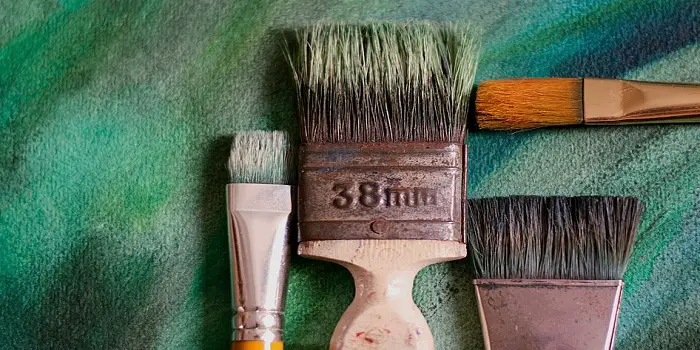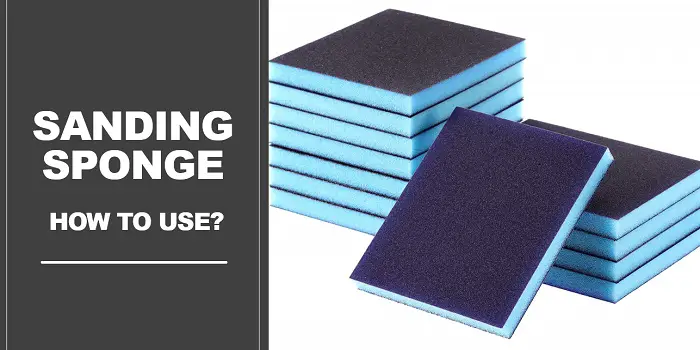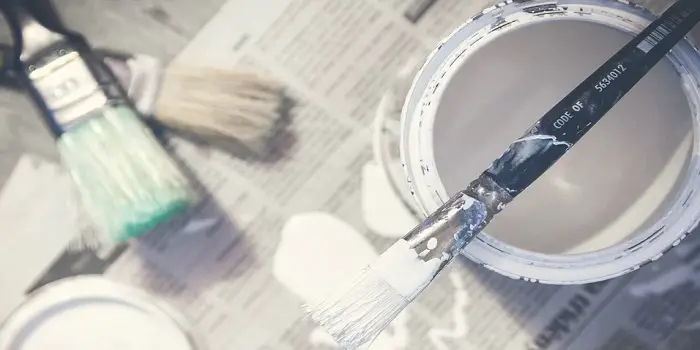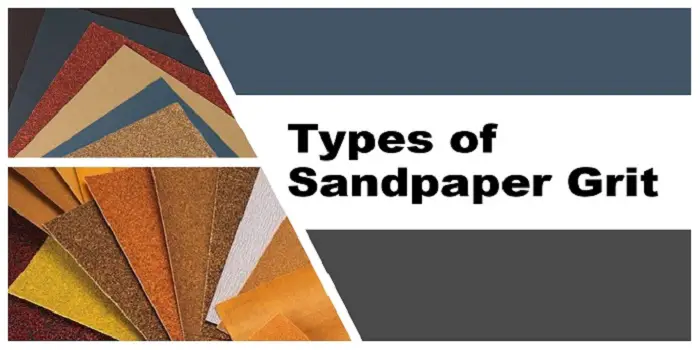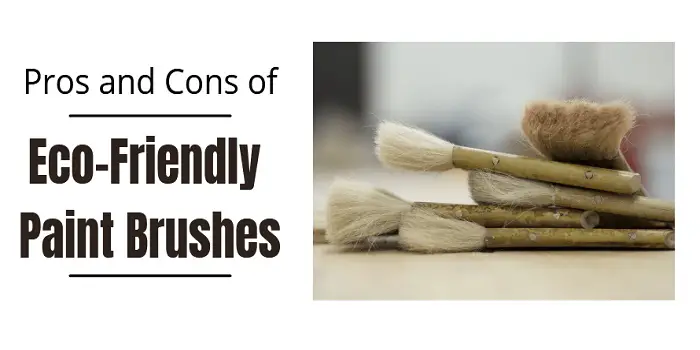
One sector that has continuously caused environmental problems over the past few decades is the seemingly harmless paintbrush industry.
Though this may come as a surprise for many, the effects of this industry have not gone unnoticed by the global environment.
The problem with paintbrushes is not exactly an age-old issue.
This should not come as a shock, but the true driver behind these issues is a relatively recent side effect due to the rise in plastic paintbrush production.
Traditional paintbrushes were made from simple materials (some of which will be discussed later for their persisting low-impact traits) and therefore posed a little challenge due to the way they were produced.
Plastic brushes were something else entirely.
Not only is producing plastic itself an energy-intensive process, but the material that makes up the bristles are also unethical and problematic.
Plastic brush bristles are made up of polyester, which is created through a reaction between coal and petroleum, both toxic chemicals in their rite if inhaled or handled incorrectly.
It’s important to note that these products are both forms of nonrenewable materials – combined with the harmful, pollutive effects of plastic production, it’s an environmentally dangerous mixture.
As if these impacts weren’t already bad enough, a huge number of these plastic brushes, nearly 300 million of them, are just thrown away each year.
They can end up in landfills, littered on the roadside, or possibly found deep in the ocean, as bits of plastic have even been discovered at the bottom of the Marians trench.
Fortunately, not all is lost!
With great challenges come some ingenious solutions and some incredibly simple and traditional alternatives.
The solution for paintbrushes is no different as designers and manufacturers dedicated to sustainability went back to the drawing board to create alternative paintbrush options.
From here on out, this article will cover these choices, what the pros and cons of those alternatives are, and how you can choose the best brush for your artistic needs.
What's Here in the Article:
What are Eco-Friendly Brushes?
The idea behind eco-friendly brushes is simple: renewable, less environmentally impactful materials are used to create high-quality paintbrushes in order to reduce waste and pollution produced by plastic brushes.
As time goes on, the introduction and creation of such brushes will become more important due to resource availability.
The world is not quite at this stage yet, but it is fast approaching.
It is in the world’s best interest to focus on using durable/sustainable materials instead of using ones that are constantly thrown away and created by using harmful substances and chemicals.
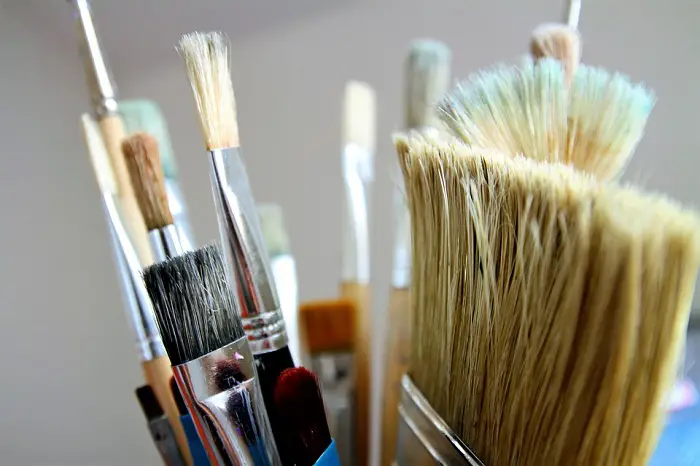
What are Eco-Friendly Brushes Made Of?
Although using simpler, safer, and stronger materials seems logical, plastics have been used more frequently due to their lower production costs.
With that said, it is the mission of eco-friendly brushes to reinforce in people that they are superior in several ways, primarily due to their lifespan, maintenance, and overall costs.
Accordingly, some of the top Eco-Friendly brush materials are being used today…
1. Bamboo
The use of bamboo as a base for the brush almost seems like a no-brainer considering its growth rate, which has been cited to be as fast as 1 millimeter every 90 seconds for certain species.
In this way, it is simultaneously a blessing and a curse to its native ecosystem.
Bamboo farmers have an ever-growing commodity on their hands as long as the conditions are right and properly cared for.
The somewhat bad part is that it’s harder NOT to care for it, though, it grows quickly in nearly every circumstance.
Even better, growing bamboo has positive effects on the atmosphere as it can produce 35% more oxygen than normal trees.
In addition to these benefits, bamboo is easy on the soil it grows on, meaning that little erosion occurs, extremely low amounts of water are necessary to maintain bamboo shoots, and most bamboo plants produce almost 20 times more material than other wood sources as well.
These aspects made bamboo an essential material for producing low-impact paintbrushes and can be found in virtually every art/craft store and across online markets like Amazon.
2. Animal Hair
Throughout the history of brush production, the use of animal hair has been a mainstay that has been propped up and supported by artists for centuries.
By and large, using animal hair for the bristles is a far better choice in terms of the environment than using a combination of coal and petroleum.
Unfortunately, numerous questions regarding animal cruelty have been brought up in recent years as a result of the sheer size of the industry.
One animal, in particular, the sable, has been a known targeted farm animal that has faced a questionable quality of life on farms in Asia.
Fortunately, there are other animal sources for the hair, primarily horses, rabbits, and a few other select animals, though there are clearly some cons to using animal materials.
3. Hala Tree
Finally, on this list are ethical brushes produced from Hala trees.
This is a great alternative to synthetic brushes because the wood/fronds harvested from these trees already happen to look like small paintbrushes.
This makes them an ideal choice for a brush without having to rework or manufacture the design through a complex process.
Aside from this, they do provide a rather detailed point to the brush and can be applied with little difficulty.
4. Corn
If you hail from the state of Iowa in the United States, it would almost be more surprising not to see corn on this list.
One of the best aspects of corn is that it can be utilized for a number of products that you might not even think they’d be found in and nearly every part of a stalk of corn can be used for one thing or another.
In the case of paintbrushes, corn’s durability, strength, and biodegradability make it the perfect candidate for producing paintbrushes.
Its greatest asset is that it is an easily renewable and highly abundant resource.
Although these brushes do still end up in landfills, they are not as hard on the surrounding ecosystem since they biodegrade easily.
Plus, many artists are fond of these brushes because of their texture against the canvas.
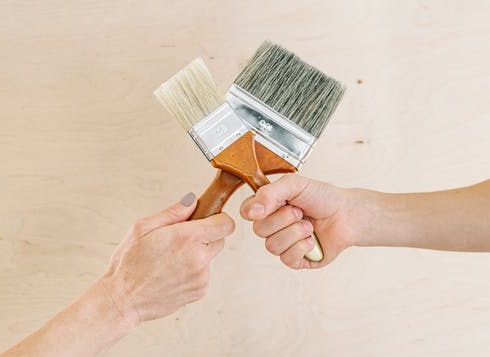
The Pros and Cons of Using Non-Plastic Brushes
It is usually best to start with the pros first, but eco-friendly brushes have very few drawbacks overall.
So, let’s start with the disadvantages first.
Basically, there are two significant obstacles that must be faced with eco-centric brushes, specifically those using animal materials.
Firstly, they’re hard to clean, and they can cause allergic reactions.
Though animal hair is a renewable resource, it is notoriously difficult to get the last color used out of animal hair brushes compared to plant-based designs.
Second, although the brush and bristles will likely be processed at some point, it is still likely that some allergens/microscopic particles will be left behind, which can cause problems for some people.
What are the Pros
These are relatively straightforward, as they’ve been outlined throughout the rest of this article, but here’s the streamlined list:
1- Using these materials saves money:
Plant-based materials are renewable and easier to obtain than coal and petroleum.
Using plant materials makes more sense logistically and financially.
2- Plant materials are easier to clean:
Animal hairs are difficult to clean due to their composition.
Plant-based brushes, on the other hand, are made of small fibers that allow the paint to dry and be washed off with ease.
3- Solvents are unnecessary:
Since the paint can dry quickly, getting paint out will require little more than water.
Accordingly, harmful solvents will not be necessary to remove oil paint or oil-based paints.
It will take no time at all to get clean paint brushes with these.
Tips for Choosing the Best Renewable & Sustainable Brushes
If you are having some difficulty choosing an eco-friendly brush, there are a few guidelines you can follow to help narrow it down.
First and foremost, a good bit of research on the manufacturer should be done.
Many producers will note that they’re eco-friendly when, in reality, they only use eco-centric materials partially (i.e., they use a bamboo handle but employ polyester bristles).
There are two other things you can do to ensure your choice is informed: buy local and buy units that are not wrapped in plastic.
Buying local is a mainstay for sustainable living and helps out your local community while you’re at it.
Looking out for manufacturers that wrap their brushes in plastic is another sure sign that their goals aren’t wholly eco-centric.
Can You Repurpose Your Natural Fiber Paint Brushes After Using?
Finally, you’re certain to reach the end of your brush’s lifespan at some point.
The question is, should you just throw it away after so much effort was put in to make an informed decision?
The answer is, of course, not!
Once your brush has been worn out, you can repurpose it any way you see fit, but here are three best suggestions from my personal experiences…
a) Make Handles for Drawers/Cabinets
Old, sturdy handles of the non-plastic brushes can easily be implemented into older designs to create a unique look.
b) Paint the Handles and use them as Signage
If you’re truly an artist, creating small signs out of durable wood can help advertise your artistic intentions with some extra fashion.
c) Craft Art Out of Them
Lastly, if you’re into model-making and other forms of crafting, there’s no limit to what you can reuse the natural fiber brush for.
Let your imagination run wild before simply throwing it away.
Final Thoughts
There are thousands of activities and products that humanity has indulged in over its existence that have had a negative impact on the global environment.
From Hydrofracking, fossil fuel burning and extraction to deforestation and frequent air travel, all have contributed greatly to ecological degradation and jumpstart climate change.
There is no shortage of problems that have stemmed from humanity’s negligence regarding the subject of environmental wellness.
It has gotten so bad for some parts of the world already that a consistent flow of solutions, mitigation tactics, and sustainability tactics will be necessary to offset the damage done so far and the potential impacts that still lie ahead.
Although these larger and popular causes should be the focus of concern across the globe, there are some surprising sources of ecological harm that require attention as well.
In industries like home painting, using eco-friendly paint products and tools (like paintbrushes) is, therefore, the need for us.
I agree this may not be feasible all the time, but we should at least try to use them wherever possible for the benefit of our globe and society.
Share the post "What are Eco-Friendly Paint Brushes – The Pros and Cons?"

Douglas Becker (aka Painter Doug) has over twenty years of experience as a painter in Adkins, Texas. At present, he resides in Florida with his family.
From painting multi-storeyed houses, condos, and apartments to large commercial buildings and small offices, he had served various customers in areas not only in Adkins but also in Southwest Florida, Sarasota, Naples, and many more. To know more about him check here.

